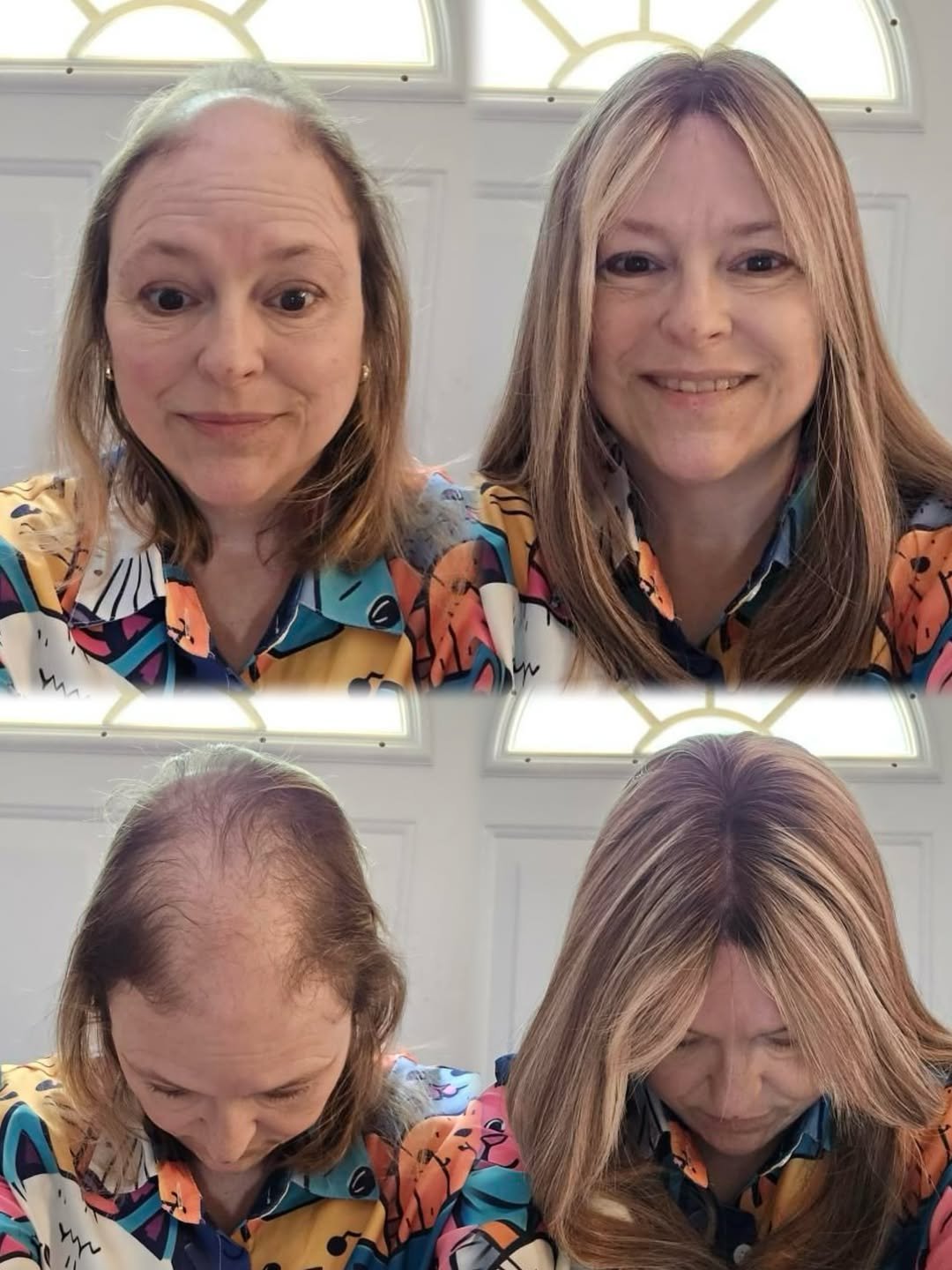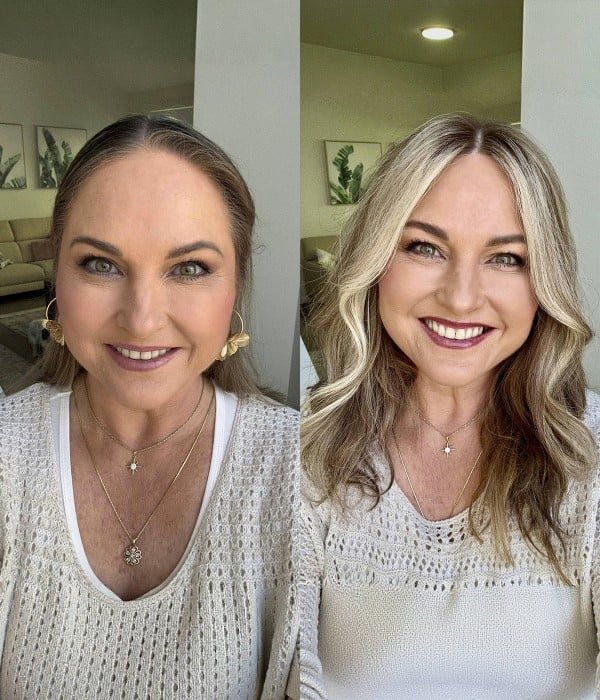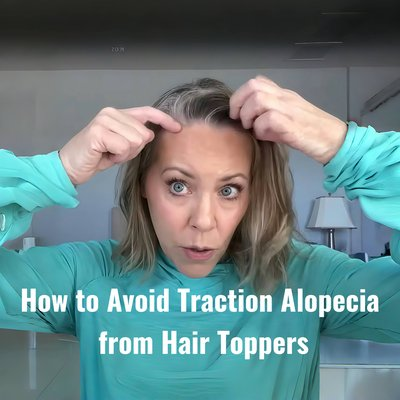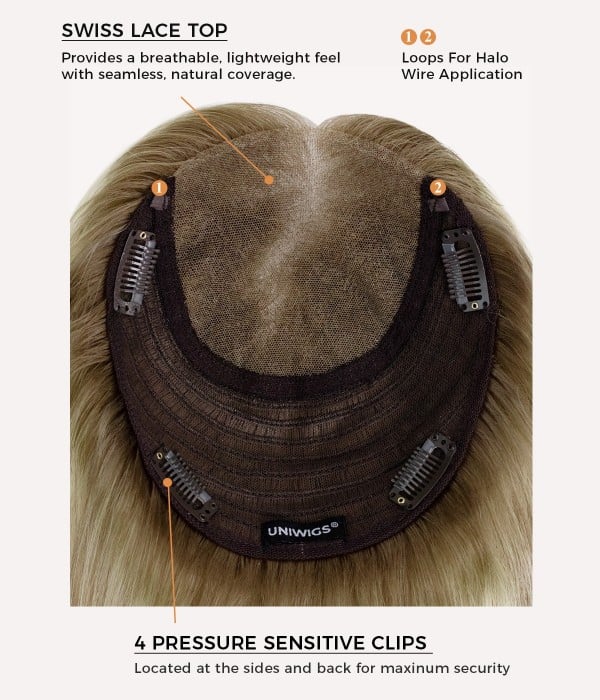If you’re a woman who relies on a hair topper to cover thinning hair, you know the struggle: a hair topper for thinning hair should boost confidence, not cause scalp pain. One of the most common complaints about hair toppers for women is the uncomfortable clips: tight grips, tugging, or pressure that leaves your scalp sore by the end of the day. Even worse, many worry about traction alopecia from constant clip tension. As someone with a sensitive scalp and thin bio hair, I’ve tested countless fixes to make my hair topper clips more comfortable.
Below, I’m sharing the proven tips that work, plus why discomfort happens in the first place.

Why Do Hair Topper Clips Feel Uncomfortable?
Before diving into solutions, let’s break down the root causes of clip discomfort: This helps you target the right fix for your needs:
- Thin/sensitive scalp: If you have a hair topper for thinning hair, your scalp is often more sensitive, and there’s less natural hair to cushion the clips.
- Tight application: Many of us overclip to prevent slipping, scooping huge chunks of hair that pull at the scalp.
- Small cap size/dense hair: A tiny cap (e.g., 4×5, 5×6) with thick hair concentrates weight and pressure on one spot—disaster for sensitive scalps.
- Clip placement: Pre-sewn clips might land on bald spots or extra-thin areas, leaving nothing to grip but tender skin.
The good news? None of these issues is permanent. With a few tweaks, your hair topper can feel secure and comfortable.
5 Proven Tips to Make Hair Topper Clips More Comfortable
These strategies are tailored for hair toppers for women with thinning hair—they’re easy, affordable, and don’t require advanced skills.
1. Opt for a Larger Cap Size (and Less Density)
The biggest game-changer for me was switching to a larger cap size. I have a small head (size small wig) but now prefer 9×9 or 10×10 caps for my hair topper. Here’s why:
- A larger cap disperses hair weight evenly, so pressure isn’t concentrated on one tiny area.
- Less dense hair reduces overall weight—no more heavy clips pulling at thin strands.
- The cap sits more naturally, so you don’t need to clip it as tightly to keep it in place.
Skip tiny, dense caps if you have thinning hair. Go for a cap that covers more surface area—your scalp will thank you.
2. Adjust How You Apply Your Hair Topper
I used to scare myself into overclipping: pulling the hair topper tight, scooping handfuls of hair, and clamping down hard. Spoiler: My topper never flew off, and the discomfort was unnecessary. Now I apply it differently:
- Place the hair topper on your head in a natural position (no pulling!).
- Scoop tiny sections of bio hair (just a small pinch) with each clip.
- Clip gently—aim for “reasonably secure,” not “immovable.”
This method cuts down on tugging while keeping the topper in place. I haven’t had issues with slipping, and my scalp no longer throbs by noon.
3. Use a Wig Grip for Extra Security (No Tight Clips Needed)
A wig grip (or topper-specific grip) is a thin, non-slip band that goes around your head. It’s a lifesaver for hair toppers for thinning hair because:
- It adds friction, so the topper stays put without tight clips.
- You can use the topper’s front comb (if it has one) to tuck under the grip instead of clipping into fragile hair.
- It distributes weight even further, reducing scalp pressure.
I wear a wig grip on busy days; no more overclipping, and my scalp stays comfortable from morning to night.
4. Swap Clips for Velcro (Gentler on Thin Hair)
If traditional pressure-sensitive clips feel too harsh, swap them for Velcro strips. Many hair topper wearers swear by this because:
- Velcro grips gently without tugging or pinching.
- It’s easy to attach to the topper’s base (no sewing required for temporary fixes).
- It’s ideal for extremely thin hair or bald spots where clips have nothing to grip.
Note: Velcro might not work for high-activity days (e.g., workouts), but it’s perfect for everyday wear.
5. Rotate Clip Placement (Avoid Traction)
If your hair topper allows, reposition or add clips to avoid putting tension on the same scalp areas daily. For example:
- Undo stitching on pre-sewn clips and move them to areas with more hair.
- Add extra clips (as I did in a previous fix) to spread out grip points.
- Alternate which clips you use each day—this prevents repeated pressure on one spot (a key cause of traction alopecia).
When to Skip Hair Toppers (and Try a Wig Instead)
Let’s be honest: hair topper clips aren’t for everyone. If you have:
- Extremely sensitive skin or a history of scalp irritation.
- Severe thinning (bald spots with no hair to grip).
- Anxiety about traction alopecia (even with fixes).
A lace-top wig might be a better fit. Wigs distribute weight across the entire scalp, and you can glue or tape the front for security without clips. I love hair toppers for their natural blend, but wigs are a great backup for days when comfort is non-negotiable. The Jade wig from UniWigs is my favorite. She is so soft and lightweight. I can wear it for 10 hours.
Final Thoughts on Comfortable Hair Topper Clips
Hair topper clips don’t have to be painful. For me, a larger cap size, gentle application, and wig grip made all the difference. As a woman with thinning hair, I refuse to choose between confidence and comfort—and you don’t have to either. The key is to listen to your scalp: if clips feel sore after an hour, adjust your method or try a new fix. And remember—you don’t need to overclip! Most hair toppers for thinning hair stay put with minimal grip, so you can relax and enjoy your day. Have you found a trick to make your hair topper clips more comfortable? Share it in the comments. And I’d love to add it to my routine!
Want me to create a step-by-step tutorial with photos for swapping hair topper clips for Velcro? Let me know, and I’ll put together a visual guide to make the process even easier.


